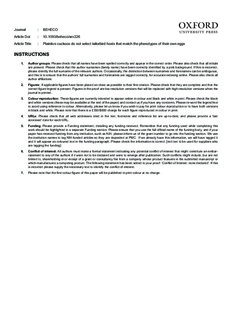| dc.contributor.author | Yang, Canchao | |
| dc.contributor.author | Huang, Qiuli | |
| dc.contributor.author | Wang, Longwu | |
| dc.contributor.author | Jiang, Aiwu | |
| dc.contributor.author | Stokke, Bård Gunnar | |
| dc.contributor.author | Fossøy, Frode | |
| dc.contributor.author | Tunheim, Odd Helge | |
| dc.contributor.author | Røskaft, Eivin | |
| dc.contributor.author | Liang, Wei | |
| dc.contributor.author | Møller, Anders Pape | |
| dc.date.accessioned | 2017-10-06T09:02:39Z | |
| dc.date.available | 2017-10-06T09:02:39Z | |
| dc.date.created | 2015-12-14T13:42:26Z | |
| dc.date.issued | 2016 | |
| dc.identifier.citation | Behavioral Ecology. 2016, 27 (3), 835-841. | nb_NO |
| dc.identifier.issn | 1045-2249 | |
| dc.identifier.uri | http://hdl.handle.net/11250/2458869 | |
| dc.description.abstract | Laying a mimetic egg is important for a brood parasite to succeed in defeating the defenses of a host that can recognize and reject nonmimetic foreign eggs. Several recent studies suggest that common cuckoos ( Cuculus canorus ) do not lay eggs randomly in their regular hosts’ nests but select host individuals after inspecting their eggs to maximize the degree of mimicry. The generality of this strategy among brood parasites is, however, not currently known. Here, we studied the matching in egg appearance between plaintive cuckoos ( Cacomantis merulinus ) and their common tailorbird ( Orthotomus sutorius ) hosts, both of which have evolved dimorphic blue and white egg phenotypes with brownish spots, presumably as a result of frequency-dependent selection. Experimental parasitism with eggs of the opposite phenotype to that of the host showed that tailorbirds were very sensitive to the appearance of foreign eggs. Tailorbirds ejected all eggs that differed from the eggs of its own morph while accepting almost all eggs belonging to their corresponding morph. Hence, cuckoos would benefit greatly by selecting host nests with egg phenotypes similar to their own. However, cuckoo eggs only matched the host egg morph in approximately half of the cases, which was consistent with the expected frequency from random egg laying. Therefore, we provide evidence that plaintive cuckoos lay eggs randomly with respect to host egg morph and that they do not selectively choose host nests to maximize egg mimicry and acceptance. | nb_NO |
| dc.language.iso | eng | nb_NO |
| dc.publisher | Oxford University Press | nb_NO |
| dc.title | Plaintive cuckoos do not select tailorbird hosts that match the phenotypes of their own eggs | nb_NO |
| dc.type | Journal article | nb_NO |
| dc.type | Peer reviewed | nb_NO |
| dc.description.version | acceptedVersion | nb_NO |
| dc.source.pagenumber | 835-841 | nb_NO |
| dc.source.volume | 27 | nb_NO |
| dc.source.journal | Behavioral Ecology | nb_NO |
| dc.source.issue | 3 | nb_NO |
| dc.identifier.doi | 10.1093/beheco/arv226 | |
| dc.identifier.cristin | 1300413 | |
| dc.relation.project | Norges forskningsråd: 218144 | nb_NO |
| dc.description.localcode | © The Author 2015; all rights reserved. Published by Oxford University Press on behalf of the International Society for Behavioral Ecology. This is the authors' accepted and refereed manuscript to the article. | nb_NO |
| cristin.unitcode | 194,66,10,0 | |
| cristin.unitname | Institutt for biologi | |
| cristin.ispublished | true | |
| cristin.fulltext | original | |
| cristin.fulltext | postprint | |
| cristin.qualitycode | 2 | |
